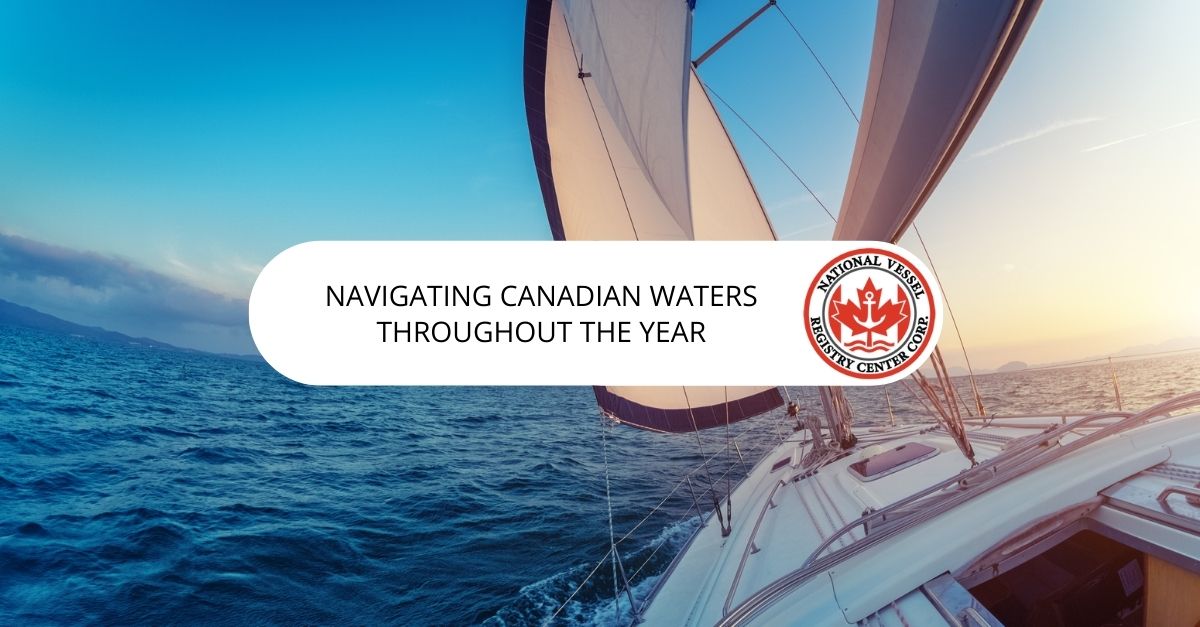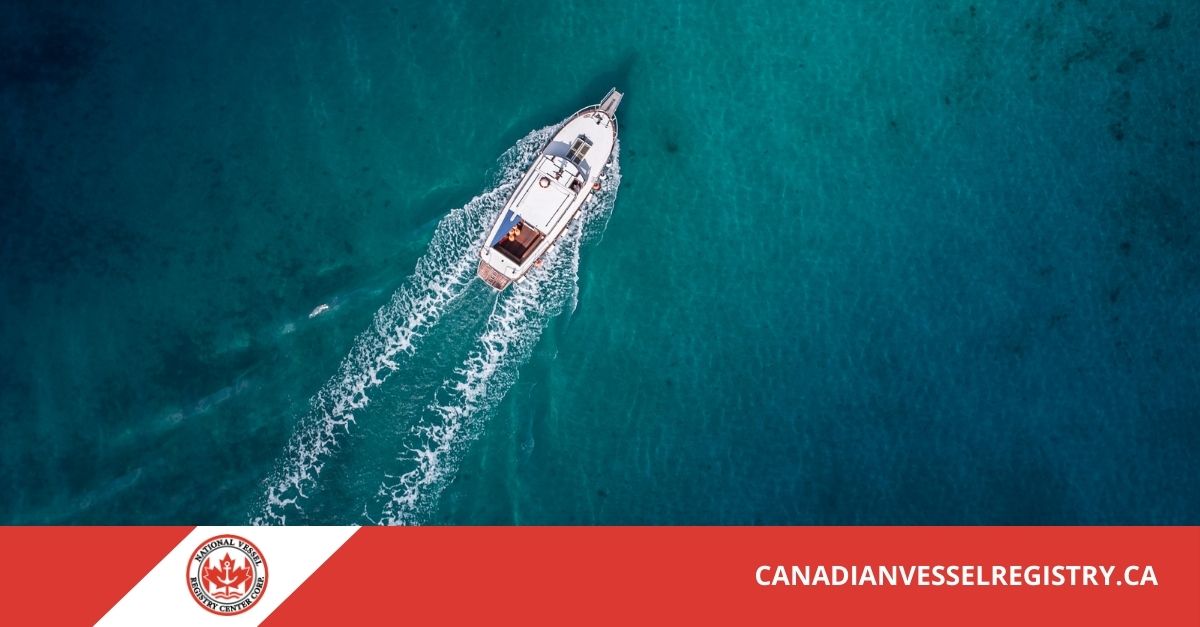It’s incredible – navigating a boat in Canada. It does not matter if you’re exploring the wilderness by kayak, canoe, or boat, it helps to familiarize yourself with seasonal conditions on the water. Doing so will help you enjoy boating more and stay safer during your boating journeys.
Navigating Canadian Waters – Season by Season
Below are tips for navigating Canadian waters throughout the year.
1. Spring: Be prepared for variable seasonal conditions
As the snow melts and the ice turns to slush, the water levels rise in lakes and streams. Therefore, you need to stay up to date on local seasonal conditions and tune into weather forecasts for any sudden changes in the climate or temperature.
Spring is a time when it rains more frequently and plants begin to bud, which may create issues with visibility.
Also, spring is a time of strong winds. Warnings frequently signal boaters to watch out for blustery gusts with speeds of 20 to 33 knots. Winds of this type dominate certain regions in March, April, and May and extend into the summer boating season and even into the fall. They may span over both coastal and inland waterways.
Strong wind alerts are not issued for marine locations where powerful winds regularly occur. These locales include offshore marine areas or the marine locations next to Labrador and Newfoundland.
Prepare Yourself for Temperature Variations
During this time, boaters should dress in layers, as temperatures and weather conditions can fluctuate dramatically during the day.
For example, in March, the temperature in Ottawa (which is part of the Eastern Pacific coast) can range from a low of 19 degrees Fahrenheit to a high of 36 degrees Fahrenheit or -7 degrees Celsius to +2 Celsius.
The month has, on average, six days of snow and rain. Winter lingers until April in British Columbia – so the province falls behind with respect to warming temperatures and the amount of snowmelt that is produced during the month.
By the time April rolls around, Canadian temperatures range, on average, from 32 degrees Fahrenheit (0 degrees Celsius) to a high of 50 degrees Fahrenheit (+11 degrees Celsius.). Rainy days increase to 11 days during the month.
If you boat in the province in May, expect to see temperatures that range from 45 degrees Fahrenheit (+8 degrees Celsius) to a max of 66 degrees Fahrenheit (+19 degrees Celsius) with an average of 13 rain days over the 31 days.
2. Summer: Plan for busy days on the water
Summer is a popular boating season. Therefore, you need to be aware of increased boat traffic and take more precautions when planning your route.
This is a time when you should respect the space of other boaters and be especially cognizant of proper safety procedures. That means you should take special care if you’re passing, overtaking, or meeting oncoming boats and vessels.
Make sure you navigate the waters by keeping aware of your speed. The beautiful weather can throw you off-guard, making you feel more carefree. This may cause you to become more reckless if you’re steering a boat.
Summer, on the waterways, emerges out of hiding around the last part of June, sometimes closer to the beginning of July. However, summer temperatures may still carry a chill – and usually sit around 68 degrees Fahrenheit or +20 degrees Celsius on these scales. The heat, needless to say, is not as intense over the land or water as it may be in southern locales.
Nevertheless, summer temperatures are also based on the humidex (a measure similar to the windchill in winter).
The humidex represents wind, humidity, and other related weather factors. For instance, if the actual temperature is 68 degrees Fahrenheit or +20 degrees Celsius, the humidex reading may suggest that it feels more like 86 degrees Fahrenheit to 95 degrees Fahrenheit, or +30 degrees Celsius to +35 degrees Celsius.
However, the water temperature in the Atlantic and Pacific oceans jumps rarely above 64 degrees Fahrenheit or +18 degrees Celsius, even in the “blistering” heat of a northern July.
3. Fall: Learn how to read the changing colors of the leaves
The changing colors of the fall leaves can make navigation more of a challenge due to a reduction in visibility along the shore. Make sure you acquaint yourself with your travel routes during the season and depend on landmarks, such as buoys or major points of land, to stay on your watery course.
Remember, Autumn visits the northern waters early. Therefore, the air can turn sharp almost overnight. Autumn is a time of frequent rains, which pass into October as wet snow. The wind, dank and cold, spans over both the land and water. If you boat near Toronto, however, Autumn is less pronounced with some warm and temperate days regaling boaters – even during December.
However, most Canadian boaters expect the advent of winter by November. Snow is falling, for the most part, almost everywhere except the south. In fact, the snow cover is fairly constant in the north, whose landscape is characterized by noticeable drops in temperature and strong and unforgiving winds. Temperatures may fall to 5 degrees Fahrenheit or -15 degrees Fahrenheit during the day.
4. Winter: Boating on Canada’s freezing waterways
Most boaters who navigate winter’s waterways do so to enjoy the stunning views. They may moor their boat and trek over ice-laden or iced-over waters. Doing so requires making sure that the ice is both thick and walker-friendly.
A lot of boaters take part in ice fishing. You can catch a variety of saltwater and fresh fish during the Canadian winter, including red snapper, muskie, and bass. If you own a boat, you might consider using a net to keep the fish on the boat’s side. This will keep any drips from freezing inside the boat, thereby preventing slips and accidents.
Naturally, cold temperatures mean that you need to check your battery’s charge before and after each boating excursion. You should also make sure that your electronics are working onboard the boat. You don’t want to be stranded without any form of communication or a GPS assistant.
Even if you’re boating in a place where daytime temperatures are hovering around 50 degrees Fahrenheit (+10 degrees Celsius), the setting sun will cause the temperature to drop exceptionally fast.
That’s why it’s important to carry blankets and wear layers of warm clothing – extremely helpful if you happen to get wet. Consider wearing a personal flotation device (PFD) as well, as wet clothing will weigh you down and cause you to chill.
Go Online to Get Registered or Licensed Today
To experience the beauty of the great outdoors while navigating the seasonal waters, you’ll need to get registered or licensed first. Make it easier on yourself by going online. Fill out an application now. The Canadian Vessel Registry has you covered, regardless of when you plan to set sail.


